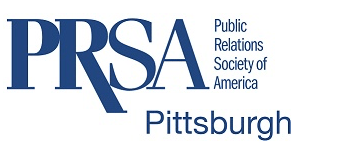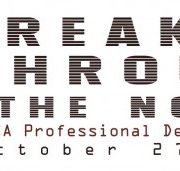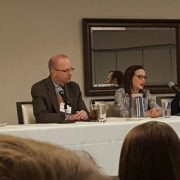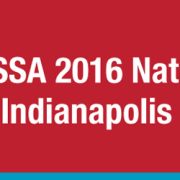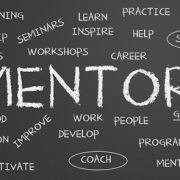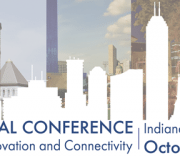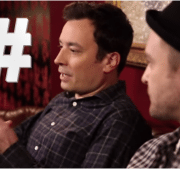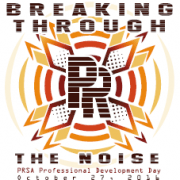Following PRSA Pittsburgh’s Professional Development Day, on of our panelists, Ben Butler, APR, wrote an excellent blog post expanding on the questions we touched on during our panel discussion “Fresh Start: Building a Reputation for Start-Up Businesses.” Ben is the owner and head of client success at Top Hat IMC. Here’s what Ben had to say:
I recently had the privilege of chatting alongside a rockstar panel of professionals about building a reputation for start-up businesses at PRSA Pittsburgh’s 2016 Professional Development Day.
The list of topics we discussed in regards to start-ups still has me thinking.
Below I’ve taken each item we discussed “on a bit of a walk.”
Often times when we think of communications challenges, I think our minds gravitate strictly to messaging and campaigning.
When it comes to a start-up, however, there’s a communications challenge that we often don’t think of as “communications.” It’s your product or service.

Example of a great start-up product we worked with—OnTheRocks. It makes clear ice cubes and spheres.
Beyond the effort behind communications campaigns, the product or service is the true lifeblood of a start-up. At the end of the day, it will be the true determining factor of success.
Your product or service inherently communicates. If it’s a product, the way it looks, feels and operates sends a tangible message to the person using it. If that product hasn’t been fully tested and built out then the end-user will most likely have a poor experience.
Let’s say the product breaks after a few uses, or is just plain complicated. This communicates to the user that your start-up builds crappy, hard-to-use things with no real use to society.
The biggest challenge in a communications sense is perfecting your product or service. It needs to be thought-out. Communications and product design are one in the same—the product itself tells a story from every detail put (or not put) into it.
If you can master this, you’ll have a strong foundation to build everything else communication-wise on. If you don’t then it won’t matter how strong your communication efforts are—the product or service will sink your ship. Also, a bad product or service is only made worse by good communications—it exposes it to more people who will in turn spread word to even more people about the suckiness.
Unless you’re the very, very first in your industry (unlikely), you’re going to step into the arena with competition. This competition often has more history, more credibility, a bigger budget and a larger team.
One of the biggest communications challenges for start-ups is outplaying the competition. It’s a classic David versus Goliath type story. So how does your David-brand beat out the Goliath-brand in a communications model where the competition has you beat on the main talking points?
Every Goliath has a weak spot. Every fire-breathing dragon has a loose scale in the armor. You’re the underdog and you’re hungry. Use your passion to meticulously study the competition. I’d be willing to bet you can identify weaknesses.
From my experience, some of those weaknesses are quickly apparent. Maybe it’s customer service or the digital marketing efforts.
Once you identify those weaknesses, do everything in your power to skyscraper over them. By doing so, you’ll quickly stand out and begin to outplay until eventually you overcome them on all fronts.
From my experience, most all brands intentionally or unintentionally follow a Diffusion of Innovation roll out.

For anything new, it’s almost unavoidable and usually the way things go:
- You have your Innovators, these are the people who are on the cutting edge of everything in your industry. They like to try the next best thing before anyone knows about it and anyone else has tested it.
- Then you have Early Adopters. They’re interested in trying the next best thing, but they want to see at least a bit of social proof before diving in. This social proof is generated by your Innovators.
- Then you have the Early Majority. They’re not quite the entire public, but they’re getting pretty close. The Late Majority is the vast population and Laggards are those that are way late to the party.
A smart start-up will realize that this model is how new innovations roll out. By knowing this, they can target their introductory communications efforts at each stage far more effectively and insure success. By doing so, a start-up can hasten the process and better control the results.
This is a trick question. I don’t think you can give an answer to this before understanding the ideal customer of your start-up.
Too often, start-ups put blind faith in something they perceive to be successful—this comes from either listening to “false prophets” or their own realities. For some maybe it’s the “surefire” advertising campaign. Others, they think maybe all they need is “social media marketing.”
You need to take the time to properly research your ideal customer. Get specific. Be quantitative and have real numbers in front of you. Unlike people, numbers never lie.
Based on your research, maybe advertising plays a role. But I’d be willing to bet that you identify other disciplines getting pulled into an integrated strategy focused purely on results. What’s critical is to integrated and strategize a combination that actually accomplishes business objectives.
As a founder, in the beginning it may be unavoidable to be integrally involved in communications due to budget and staffing restraints.
The moment this no longer has to be the case, it shouldn’t be the case.
Eventually, every founder must step back from the granular day-to-day to let their now team deal with it. Whether they make this decision or not is how they truly help or hinder communications.
I’ve dealt with founders with marketing communications departments of 30-plus people who bottleneck campaigns. They do this because they don’t empower the head of that department to make decisions outside of them. You know what this did to the communications efforts of this organization? It slowed it down to a snail’s pace. In fact, I think snails were even outpacing this group.
The epitome role of a founder varies per start-up type, but overall it’s a higher-level position of leadership.
- For a product-based business, they may be a the innovator who pushes the company forward, but ultimately relies on an entire product design/engineering team.
- For a consumer brand, they may be the difference maker and value-defender.
- For an agency, they may end up as the ultimate brand evangelist for their agency. If they try to get involved with every aspect of operations, they will in fact slow everything down.
WHAT ARE SOME KEY BRANDING MISTAKES THAT YOU OR START-UPS YOU HAVE WORKED WITH HAVE MADE WHEN STARTING OUT? I.E. A LOGO THAT’S TOO COMPLICATED
The biggest branding mistake I’ve seen is not starting with a Brand Strategy. It seems like start-ups dive into the process at all stages and don’t start here.
A Brand Strategy is a researched philosophy that is done before you even think name, visual identity or communications assets.
Without a Brand Strategy, a start-up is susceptible to making inconsistent decisions that aren’t attached to their true goals. They’re also susceptible to not creating a branding that will connect with ideal customers.
Next is of course the naming and visual identity work. Some brands launch with names that are confusing and absolutely off base. This will also lead into visual identities that only further the damage of that poor name.
As a start-up, it’s difficult to hone in on this, but it must be done. Take extra time to properly create a name and visual identity that’s on-point and tested with your target audience prior to putting all of the chips into it.
Rebranding is detrimental and costly.
Hands-down, number one. Start with a killer website. A website is one of those places where you can immediately begin to beat out the competition.
Nowadays, the website is the central most communications crossroads. It doesn’t matter if you’re posting aggressively to social media, placing stories left and right or generating word-of-mouth buzz. People are going to come to your website for more info or to purchase/take advantage. If that website is garbage, you’re missing out on a tremendous opportunity.
Don’t have the in-house talent? Hire a website design agency.
This applies to anything used as a follow-up to an in-person conversation. The actual asset depends on your business type.
For some it might just be a hand-out. Others? Maybe it’s something a bit more hands on.
Social media isn’t an excuse for an entire, full-blown strategy. It is, however, a foundational starting point. Invest in getting these set-up, growing and running. You can use them to share your story and answer customer questions.
I think a lot of people thought social media would become the take-over-the-world-and-kill-all-other-methods area of communications efforts at some point.
What we’re seeing with social media is that it’s still just another tactic. Tactics will rise and fade away as society advances and changes its communication preferences. What needs to root an organization’s communications is a soundly researched strategy driven by business objectives. Use tactics as part of a strategy and you won’t be in this place of “living or dying” by social media.
In that sense, you can use it as a customer-communications tool, a news sharing source and a digital ad platform.
This may look tougher than it is.
I would say you need to give a little to get a little.
For a software company, offer a free trial or bring on some founding members who get it at a crazy low price. If your software is good enough, they’ll be delighted to provide testimonials.
For a product, strategically select some beta testers who will give you the endorsement.
For an agency, or service-based business, take on some pro-bono prestige work to build your portfolio as you’re getting started.
Harry’s—a men’s razor brand—rolled out a tremendous communications plan.
A cornerstone of that effort was a referral campaign.

via Four Hour Work Week
For their prelaunch, they offered the public the opportunity to refer friends and get rewards. With a unique referral link, you could spread word via email, text and social media. Anytime someone signed up with your link, you got a point. At milestones, you got rewards. At 50? One year of free blades.
In one week, Harry’s generated an email list of 100,000 people. That’s staggering.
There are three specific instances:
- Your ideal customers are confused about who you are and what you do
- People often get your brand confused with another, to an extreme detriment
- When your internal staff cringes at the thought of your brand
One of the biggest challenges is to continuing to fight like an underdog. When you’re in the start-up stage, often times there’s never a more innovative time in your history. You come up with insane acquisition ideas and campaigns.
As you become successful and shed that start-up status, that can be lost. Then guess what? Some other start-up is going to come along and stamp on you just like you did to your competition.
Never stop fighting like an underdog.
And that brings us to the end of this little walk with those topics.
Have any other questions about building and managing a reputation as a start-up? Sound off below.
Ben Butler, APR, is an accredited marketing communications professional and the founder and head of client success at Top Hat IMC.
 By Steve Radick
By Steve Radick